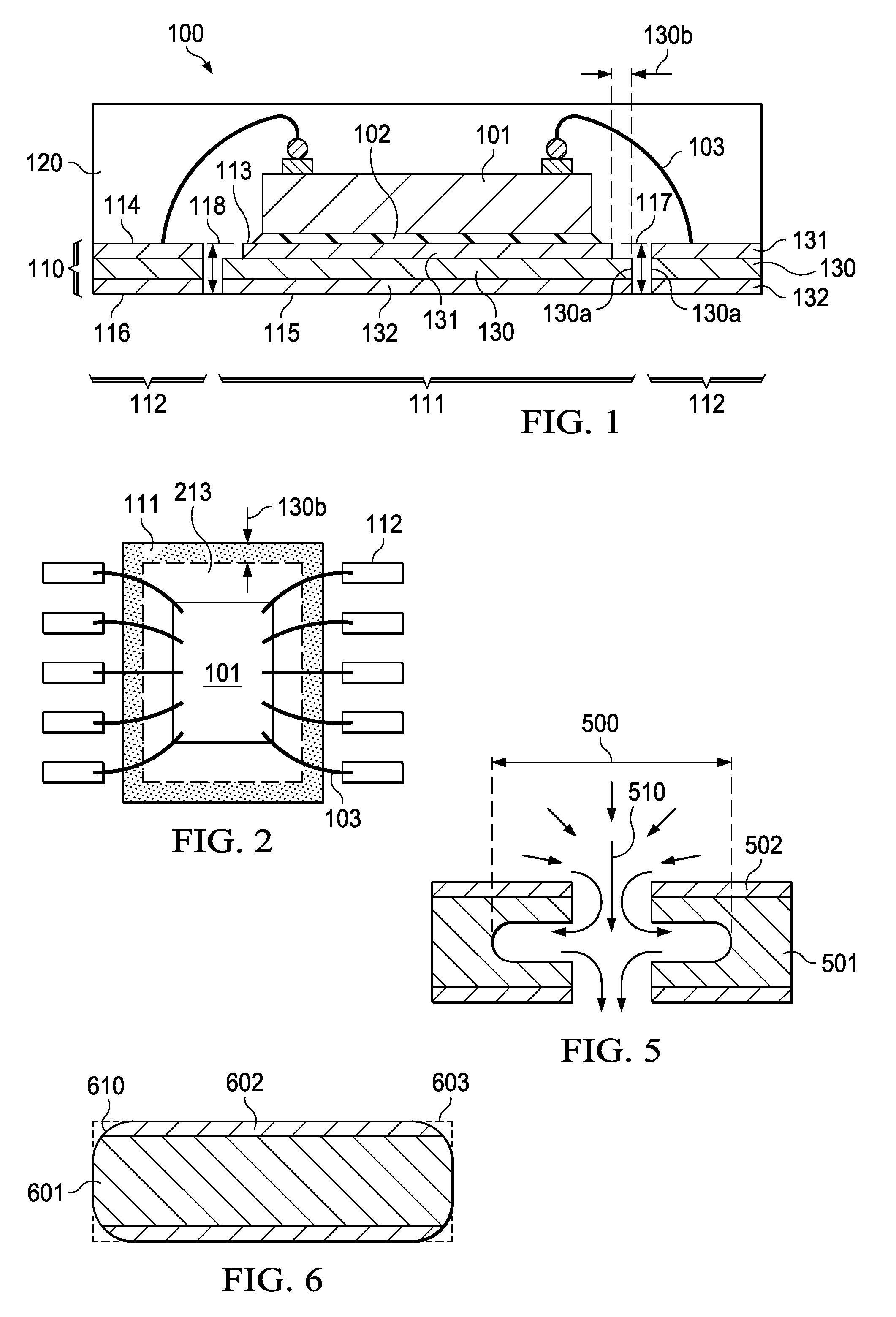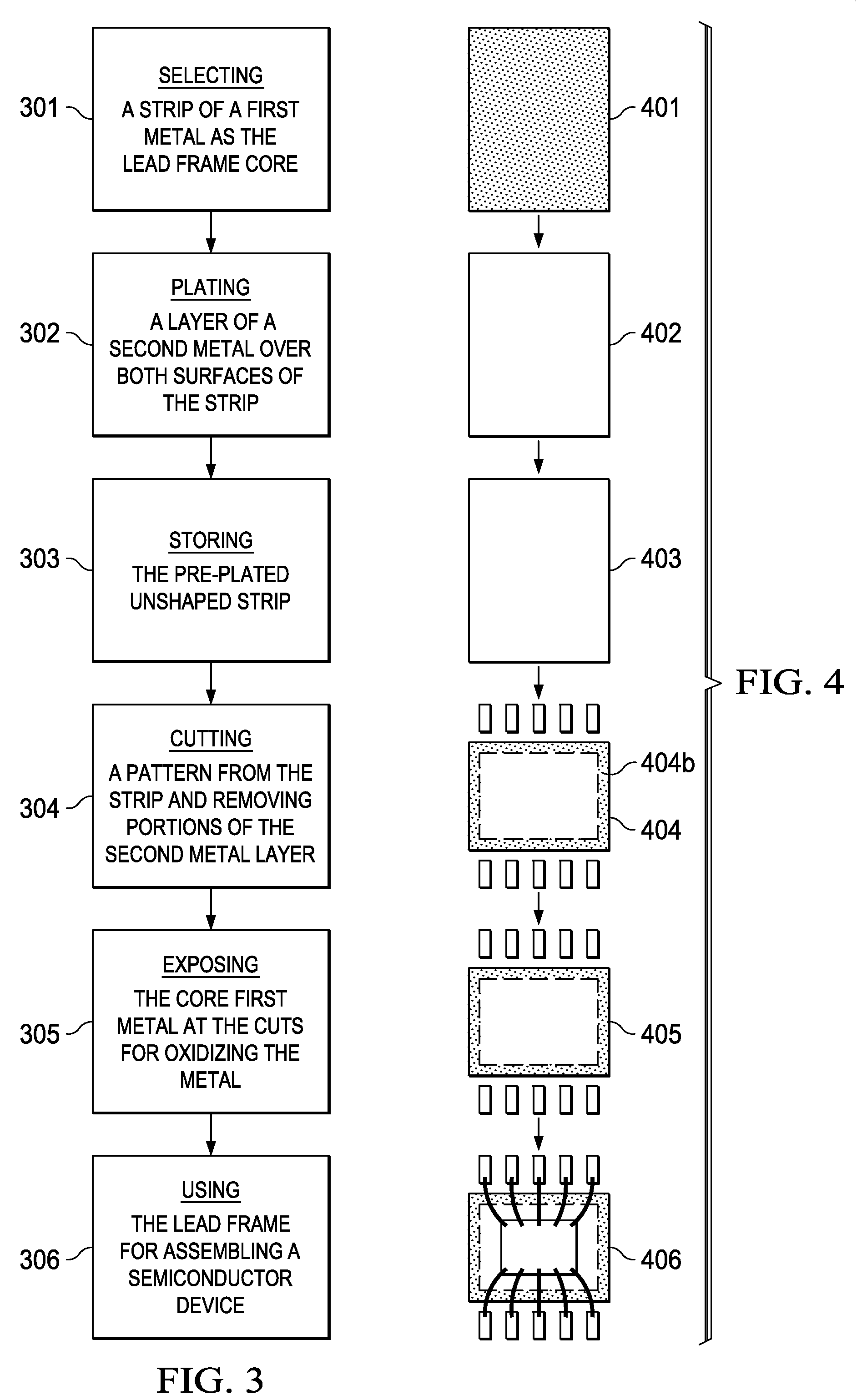Method for Semiconductor Leadframes in Low Volume and Rapid Turnaround
a leadframe and low-volume technology, applied in semiconductor devices, semiconductor/solid-state device details, electrical equipment, etc., can solve the problems of affecting the reliability of devices, wasting time and investment money, and presently taking too much cycle time and investment money to tool up stamping machines, photomasks, etching baths, etc., to achieve strong adhesion between leadframe and polymeric encapsulation, reduce cycle time, and easy to oxidize
- Summary
- Abstract
- Description
- Claims
- Application Information
AI Technical Summary
Benefits of technology
Problems solved by technology
Method used
Image
Examples
Embodiment Construction
[0021]FIG. 1 depicts an exemplary semiconductor device of the Quad Flat No-Lead (QFN), or Small Outline No-Lead (SON) type, generally designated 100, as an embodiment of the invention. A semiconductor chip 101 is attached by a polymeric material 102 to the pad 111 of a metallic leadframe 110. Besides pad 111, the leadframe 110 has a plurality of leads 112. Pad 111 has a first surface 113 and a second surface 115, which is parallel to first surface 113. Leads 112 have a first surface 114 and a second surface 116, which is parallel to first surface 114. In FIG. 1, first surface 113 of the pad and first surface 114 of the leads lie in one plane, and second surface 115 of the pad and second surface 116 of the leads lie in another parallel plane. In other semiconductor devices, pad 111 and leads 112 may be offset relative to each other so that the pad first surface is in a plane different from but parallel to the plane of the lead first surfaces.
[0022]Pad 111 further has sidewalls 117 or...
PUM
| Property | Measurement | Unit |
|---|---|---|
| thick | aaaaa | aaaaa |
| delivery time | aaaaa | aaaaa |
| thickness | aaaaa | aaaaa |
Abstract
Description
Claims
Application Information
 Login to View More
Login to View More - R&D
- Intellectual Property
- Life Sciences
- Materials
- Tech Scout
- Unparalleled Data Quality
- Higher Quality Content
- 60% Fewer Hallucinations
Browse by: Latest US Patents, China's latest patents, Technical Efficacy Thesaurus, Application Domain, Technology Topic, Popular Technical Reports.
© 2025 PatSnap. All rights reserved.Legal|Privacy policy|Modern Slavery Act Transparency Statement|Sitemap|About US| Contact US: help@patsnap.com



